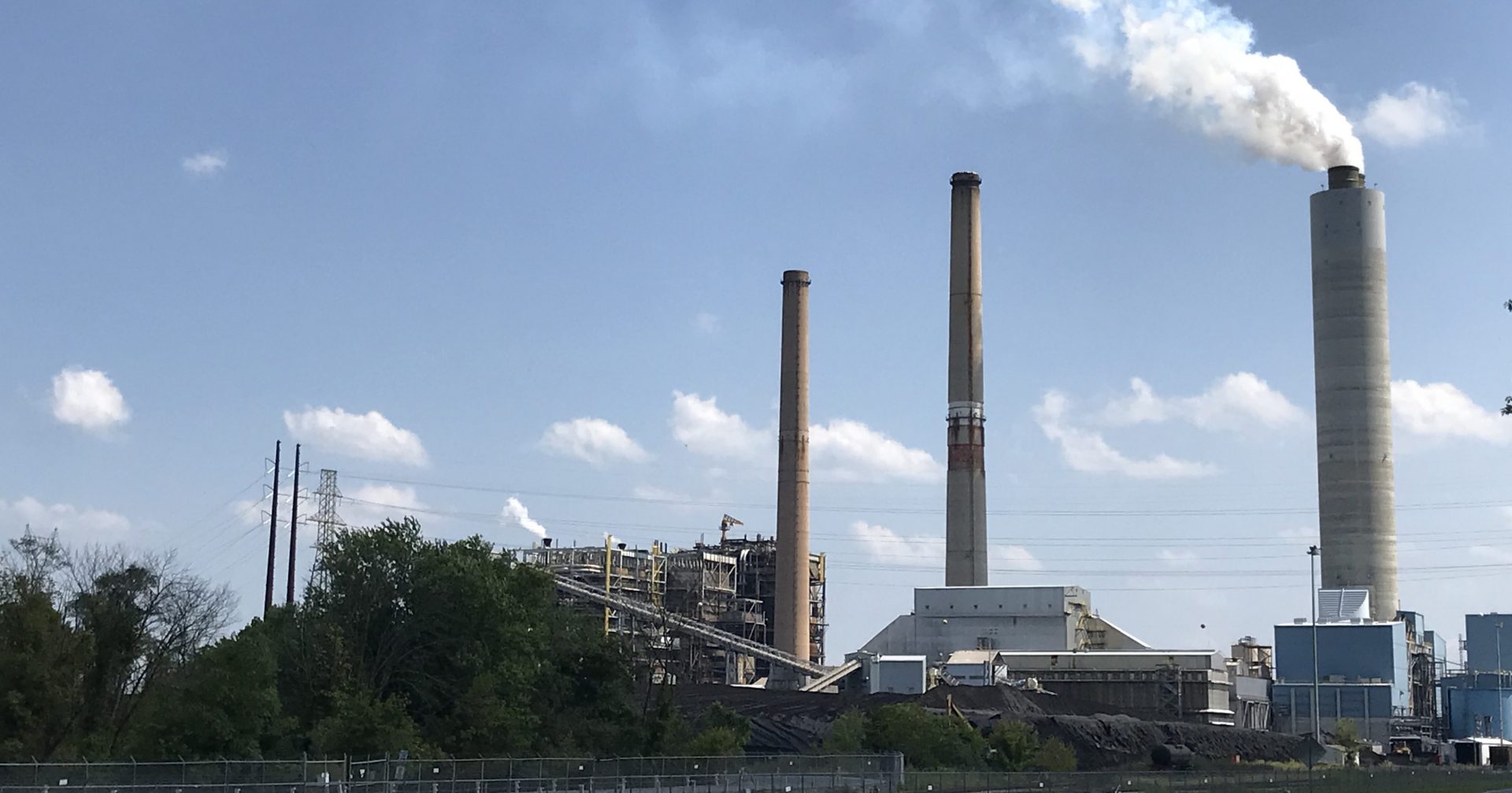
Talen Energy's Brunner Island plant in York County is switching from coal to natural gas.
Marie Cusick / StateImpact Pennsylvania


Talen Energy's Brunner Island plant in York County is switching from coal to natural gas.
Marie Cusick / StateImpact Pennsylvania

Marie Cusick / StateImpact Pennsylvania
Talen Energy's Brunner Island plant in York County is switching from coal to natural gas.
The six-county Harrisburg metro area had its lowest levels of ozone pollution on record in an annual air quality report. But the midstate still has pollution issues to work on.
The new State of the Air report from the American Lung Association finds the area covering Adams, Cumberland, Dauphin, Lebanon, Perry, and York counties worsened in daily particle pollution for the third straight year, earning a D grade bordering on an F.
The report, released Wednesday, doesn’t investigate the source of the pollution. Particles often come from transportation and agriculture. They are very small pieces of soot, metals or other toxics that can get embedded in the lungs. Ozone is a gas that’s harmful when breathed in. It forms from a combination of different pollutants known as volatile organic compounds and heat.
Kevin Stewart, Director Environmental Health for the American Lung Association, said they are pushing for stricter air quality standards from the federal government.
“Although all the grades are passing grades on our report it doesn’t mean the air is perfectly safe to breathe,” Stewart said.
Stewart said even one bad air day could be one too many for someone who’s in a high risk group, such as children, seniors, pregnant people, people of color, and people with respiratory or cardiovascular conditions. He added studies have shown the current standards for air quality are inadequate for protecting public health.
This year’s report tracks the number of days that exceeded the federal standards for ozone and particle pollution between 2019 and 2021.
The report found that nearly 120 million people across the country–or more than one in three– live in counties that had unhealthy levels of ozone or particle pollution. More than half of those people are people of color.
Dauphin and York counties earned their first A grades in the 2023 report for recording zero unhealthy days of ozone.
Dauphin County had the worst performance for 24-hour particle pollution in the metro area, earning a D grade. Adams and York Counties worsened from As in last year’s report to Bs this year for particle pollution.
Lancaster County earned a B grade for ozone–an improvement–but got its third F in a row for particle pollution.
Stewart said it’s important people are aware of their local air quality and take a look at what’s causing problems.
“Past good performance is not a guarantee of future success, so we’re looking for long term solutions that actually will hold out,” Stewart said.
StateImpact Pennsylvania is a collaboration among WITF, WHYY, and the Allegheny Front. Reporters Reid Frazier, Rachel McDevitt and Susan Phillips cover the commonwealth’s energy economy. Read their reports on this site, and hear them on public radio stations across Pennsylvania.
(listed by story count)
StateImpact Pennsylvania is a collaboration among WITF, WHYY, and the Allegheny Front. Reporters Reid Frazier, Rachel McDevitt and Susan Phillips cover the commonwealth’s energy economy. Read their reports on this site, and hear them on public radio stations across Pennsylvania.
Climate Solutions, a collaboration of news organizations, educational institutions and a theater company, uses engagement, education and storytelling to help central Pennsylvanians toward climate change literacy, resilience and adaptation. Our work will amplify how people are finding solutions to the challenges presented by a warming world.